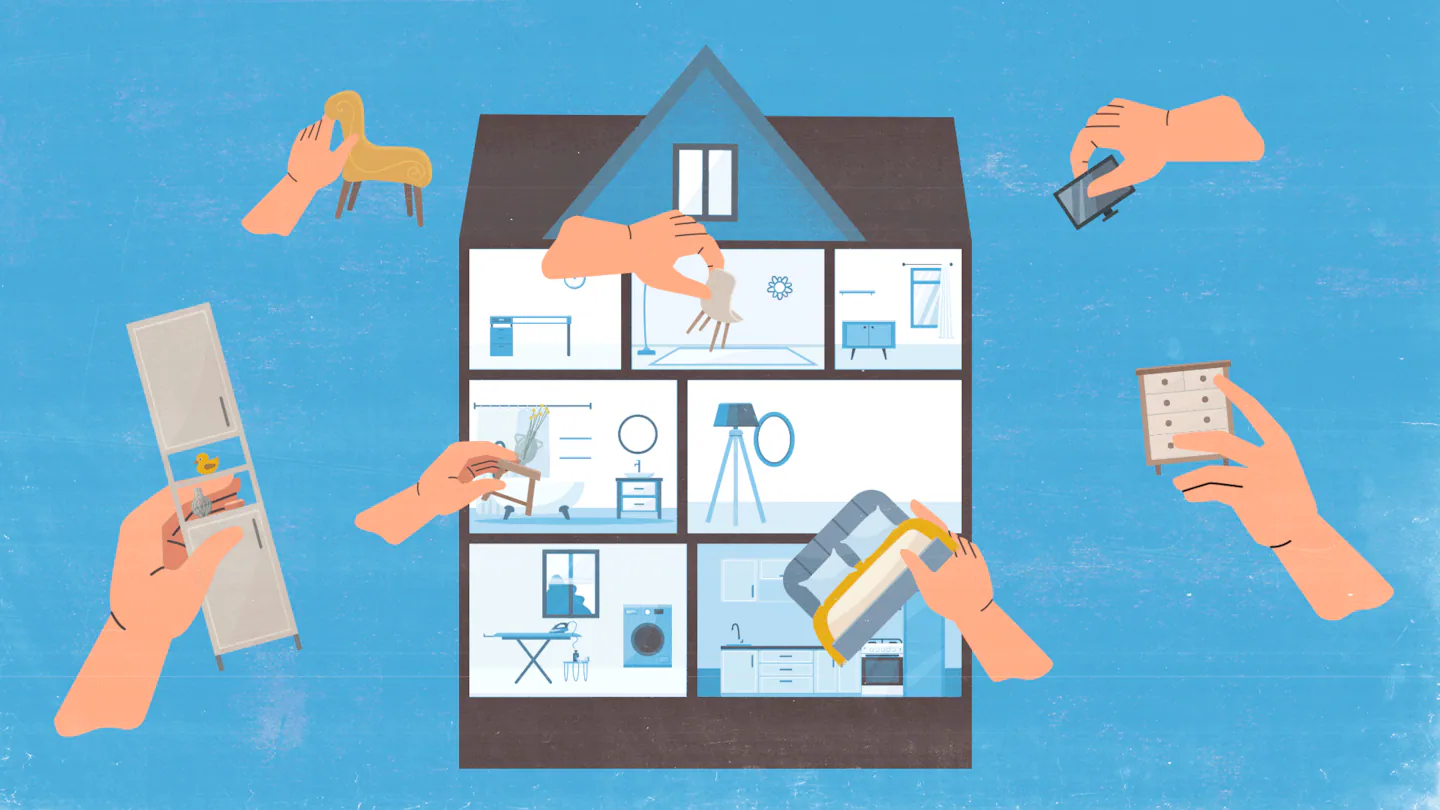
I searched online for other organization options. Obsessing about the vacuum became a sickening compulsion, and not the only one I had as I tried to get our home ready.
Everywhere I looked, there were more problems to solve. The houseplants needed spots where they wouldn’t rub against the window shades. The staircase railings made shadows on the walls at different times of the day, so I had to choose new art that wouldn’t look as if it had prison bars over it. The magazine rack and dresser for hair supplies were not being used. The reading material was everywhere. The hair elastics were lying on the floor.
Before my home renovation, I had read that fixing my space would improve my life. No doubt we’ve all been in rooms that force us into congregation or contemplation or whose filtered light makes us pause to experience its beauty, and my husband and I worked with an architect who could bring those qualities to ours. Once the renovation was over, I was still endlessly designing the interior, still chasing the elusive high of “dopamine decor,” a design phenomenon that emphasizes synapse-level delight.
Millennials like me are spending more on home decor than members of older generations are, according to a 2024 report by real estate company Opendoor. In part, this trend is due to high housing costs and limited inventory that are forcing us to stay put and personalize our spaces instead of upgrading. Also, how could we resist the urge to do so with our social media feeds pushing us Architectural Digest-level eye candy that Pinterest then shows us where to buy and online DIYers show us how to re-create on the cheap?
But my design fixation was making me feel worse, not better. It was more downer, less dopamine, decor.
Before we started planning our home renovation, I tended to make do with spaces that had all kinds of problems. When my bedroom didn’t have a window, I grumbled but lived with it. If the storage was limited, I got rid of stuff. Mice were detested but unavoidable roommates.
But in planning a house around my and my husband’s needs, wants, and habits, we had to consider how we wanted to live. Believing that the architecture of a space can guide us into better behaviors, I imagined an ideal version of myself blooming in my ideal interior.
I thought about where I’d prefer everyone to put their keys and bags when they entered and where I’d encourage the family to hang out. I created a quiet room to read and work just off the main living space, so any of us could get some privacy if we wanted. I considered where the most beautiful sunlight came in and how to take advantage of it.
When construction was completed, all that work did end up changing how we used our space. Our daughter wanted to read in the little nook I’d created for that purpose. Having a sound system made us have spontaneous dance parties. All of us, even the little ones, became more conscious of mood lighting.
I’d been on parental leave during the renovation, and it took over my life. While my family enjoyed the fruits of my labor and I was thrilled with the changes, I couldn’t stop wanting to make more. The desire to get my house to the point where I could finally relax in it overwhelmed me.
So I continued to obsess over where to put the vacuum cleaner. I circled from option to option.
My mind always works best when given a set of challenges through which I’m required to find an elegant path. That’s how I think about my writing as a journalist, searching for the accurate story arc that ties together a set of facts. But this time, my mind kept churning, and there was no through line to be found.
I moved the vacuum cleaner and its component parts under the coffee bar, so then I had to walk a few feet to the kitchen trash can to get rid of the K-cups. I imagined that this added intense friction to my life.
I kept thinking. I kept interior designing. I took a work meeting from my car instead of in person, as I initially promised, so that I could make a trip to buy some collectible mugs to add a dash of “unexpected red,” based on a viral TikTok theory that adding something red to a room where it doesn’t match will make it look instantly better. I knew I had a problem when I started hiding my phone screen from my husband so he couldn’t see how often I was on Facebook Marketplace.
I’d created an identity around building an environment that could allow my ideal self to flourish. The problem was, I’d been neglecting my actual life in the process. Middle age is hard. We find ourselves stagnating, resisting the pull to just succumb to it. We see the world changing so rapidly around us, and we struggle to keep up. There’s always so much to do — so many ways to lose ourselves to all of it.
Given the chaos in the world around us, it makes sense that we’d want to exert ourselves in the safe context of our homes. But the truth is that I really didn’t have as much control as I wanted, even in my home, and even over it. No matter how well-intentioned I am about storage, the hair accessories will end up on the floor. The cabinets will get banged up. The space won’t be used as imagined. Clutter is inevitable. Turns out, compulsively grasping at control through home design is not a path to well-being.
While good design can nudge us toward more satisfaction, it can’t insulate us from our problems. I love a beautiful and functional space, but I eventually had to accept that my house will never really be done. I had to start living again.



